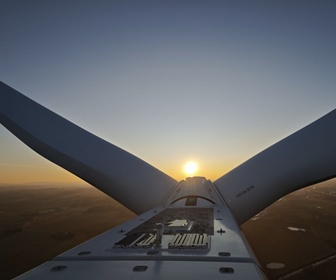Ørsted’s Board of Directors has approved a business plan with the ambition of 35-38 GW of installed capacity by 2030 and updated financial targets, following the completion of a comprehensive portfolio review.
Operating profit (EBITDA) for the year amounted to DKK 18.7 billion. Excluding new partnerships and cancellation fees, EBITDA amounted to DKK 24.0 billion. EBITDA from offshore sites more than doubled to DKK 20.2 billion in 2023 due to ramp-up of generation at Hornsea 2 and Greater Changhua 1 and 2a, and as the negative effects from hedges in 2022 were not repeated in 2023. EBITDA in 2023 was impacted by a provision of DKK 9.6 billion for cancellation fees related to its decision to cease the development of Ocean Wind 1. In addition, Ørsted recognised impairment losses of DKK 26.8 billion in 2023. The majority of these (DKK 19.9 billion) related to Ocean Wind 1. Net profit amounted to DKK -20.2 billion, and return on capital employed (ROCE) came in at -14 %. Net profit and ROCE excluding impairment losses and cancellation fees amounted to DKK 14.9 billion and 12.9 %, respectively.
Despite strong underlying business progress, 2023 marked a year with substantial challenges for Ørsted as its US offshore projects caused significant impairments and additional costs for terminating contracts, leading to a negative impact on Ørsted’s credit metric (FFO/adjusted net debt) projections. In response to this, Ørsted is implementing measures to ensure a robust balance sheet, supporting long-term growth and capital structure resilience towards 2030. Based on the learnings from the US offshore projects, Ørsted has also concluded an extensive review of its project portfolio and has taken actions to reduce risks.
Ørsted’s fundamental strategic choices on technologies and regions are unchanged, and Ørsted still aims to be the world leader in offshore and a regional player in onshore and P2X in Europe and the US. However, Ørsted has revisited its portfolio to prioritise growth options with the highest potential for value creation and lower risks.
As previously communicated, Ørsted has ceased the development of the offshore wind projects Ocean Wind 1 and Ocean Wind 2 in the form that they were awarded by the New Jersey Board of Public Utilities, has decided to reposition the offshore wind project Skipjack Wind in the US, and will primarily focus its US offshore portfolio towards the North-East Atlantic. To reduce development costs and create further strategic market focus, Ørsted is exiting several offshore markets (including Norway, Spain, and Portugal), deprioritising development activities in Japan, and planning for a leaner development within floating offshore wind and P2X.
Project cancellations and phasing of capital expenditure across the portfolio will result in approximately DKK 35 billion of capital expenditure relief in 2024-2026. The portfolio changes will result in approximately DKK 3 billion of development expenditure reductions in 2024-2026. Besides reducing capital expenditure and project development costs, Ørsted pauses dividends for the financial years 2023-2025. Furthermore, Ørsted will accelerate its divestment programme. Farm-downs and divestments are expected to contribute with proceeds of approximately DKK 115 billion towards 2030, of which approximately DKK 70-80 billion are expected in 2024-2026.
In addition, Ørsted will look at measures to become a leaner and more efficient organisation and has set a target to reduce its fixed costs by DKK 1 billion by 2026 compared to 2023, on a like-for-like basis. This will include a reduction of 600-800 positions globally. Not all reductions will result in redundancies, but there will be redundancies throughout 2024, and today, Ørsted is announcing that approximately 250 people globally will be made redundant and leave Ørsted within the coming months.
Ørsted has updated its ambition for installed renewable capacity from approximately 50 GW to 35-38 GW by 2030. By 2026, Ørsted expects to have an installed capacity of approximately 23 GW. Ørsted has also updated its financial targets for 2024-2030 and its financial policies to reflect the new strategic ambition for installed capacity by 2030. Ørsted expects EBITDA (excluding new partnerships) to increase to approximately DKK 39-43 billion in 2030, corresponding to an annual growth (CAGR) of 8 % in the period 2023-2030 (previously DKK 50-55 billion in 2030, corresponding to a targeted annual growth of 13-14 %). Ørsted has decided to pause dividends for the financial years 2023, 2024, and 2025. Hereafter, the target is to reinstate dividends from the financial year 2026.
Ørsted plans a DKK 270 billion investment programme in the period 2024-2030, of which Ørsted expects to invest approximately DKK 130 billion by 2026. The business plan is fully financed without any need for raising new equity. It is financed through a combination of operating cash flow, partnerships and divestments, tax equity, as wells as debt and hybrid issuance.








